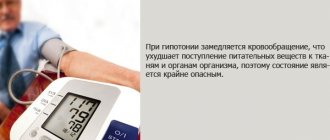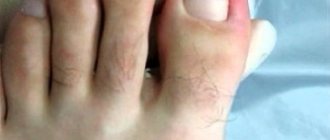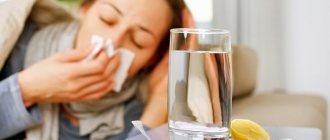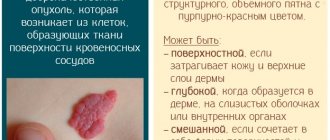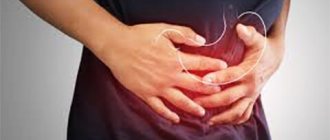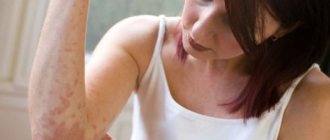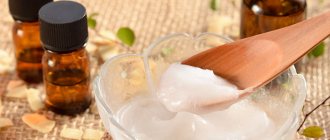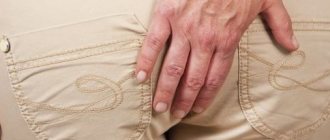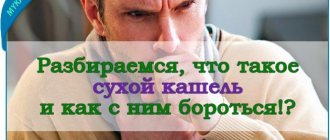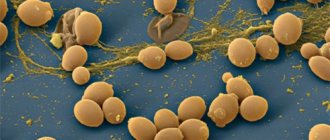Miliaria is an irritation of the skin that develops due to increased sweating and at the same time decreased evaporation of sweat. Most often, this condition can be observed in young children due to the structural characteristics of the skin, but adults are not immune from prickly heat. It should be understood that prickly heat, although it looks like an infectious disease, is absolutely not contagious to others.
What happens with heat rash?
Sweat released in increased quantities clogs the sweat glands and has an irritating effect on the skin; insufficient evaporation will lead to a response, that is, prickly heat.
Why does prickly heat appear?
Deviations in health and environmental conditions are the main causes of prickly heat.
Pathological causes include:
- obesity;
- disturbance of metabolic reactions in the body;
- diseases of the endocrine system;
- excessive sweating;
- diseases of the heart and blood vessels.
External provocateurs of the disease include:
- dramatic climate change;
- increased humidity and air temperature;
- regular high-intensity physical activity, which leads to increased sweating;
- clothing that rubs the skin;
- clothing made from fabrics that do not allow air to pass through;
- cosmetics with a dense texture;
- disregard for hygiene rules.
Causes
Some of the reasons for this condition include:
- Increased sweating due to dysfunction of the apocrine glands.
- Infectious diseases with fever and increased sweating.
- Endocrine diseases: diabetes , hypothyroidism and hyperthyroidism .
- Neurological diseases.
- Excess weight.
- Lack of hygiene.
- Hard physical work in a hot climate.
- Wearing clothes out of season (especially synthetic clothing).
- Skin injuries and abrasions.
- The use of oily foundation and nourishing creams in the summer, which creates artificial blockage of pores.
If we consider the causes of prickly heat in children, we can say that its appearance is caused by:
- Overheating of a child by wrapping.
- High temperature in the room.
- Rare diaper changes.
- Rare water and air procedures.
- Use of synthetic clothing.
- Use of low-quality skin care products.
- Frequent use of soap.
Classifications of skin diseases in adults
According to the degree of manifestation, prickly heat can be uncomplicated or complicated. The first type includes types of miliaria that appear on the skin as rashes of small blisters with clear liquid.
In the second type, the rash is accompanied by:
- swelling;
- severe itching;
- pain;
- redness at the site of the disease;
- cloudiness of the liquid in the bubbles;
- merging of individual bubbles into one large one;
The appearance of these symptoms indicates the presence of infection.
Apocrine miliaria
The disease develops when the action of apocrine glands is disrupted, located: in the armpits, around the anus, in the nipple area, on the genitals and pubic skin.
Often accompanied by infectious inflammation in the deep layers of the skin.
Reasons include: excessive production of hormones and neglect of personal hygiene.
Apocrine miliaria symptoms:
- formation of infiltrates in the middle layers of the skin;
- appears as reddish spots on the surface of the skin;
- localization of inflammation in the locations of apocrine glands.
Miliaria rubra
Miliaria rubra appears on parts of the body with sensitive skin. It often develops in the folds of the skin in obese people. The disease is associated with excessive sweating, which causes inflammation in the upper layers of the skin.
Symptoms:
- vesicular rashes, up to 3 mm in size, merge as they develop;
- the contents of the bubbles are cloudy;
- itching and redness at the sites of occurrence;
- As it progresses, crusts appear, which indicate the addition of an infection.
Papular miliaria
A more severe and acute form of the disease. Occurs due to the addition of infection to prickly heat. The blisters increase in size and fill with purulent contents. They quickly spread throughout the body, causing itching and a burning sensation.
Symptoms:
- body temperature rises and remains at the same level;
- the vessels of the affected part of the body become overfilled with blood;
- the localization sites of papular miliaria swell, causing pain when touched;
The treatment period for the disease is long, taking up to several months.
Crystal prickly heat
Mild form of the disease. Manifests itself in the form of vesicular rashes up to 2.5 mm in size. The bubble filling is transparent. There is little or no redness of the skin. Accompanied by mild itching. This type of heat rash is often caused by an increase in body temperature.
Symptoms:
- the appearance of transparent bubbles merging with each other;
- peeling of the skin in places where the disease is localized.
Miliaria in adults.
The photo shows some varieties. Crystalline prickly heat does not require drug treatment, it is enough to follow the rules of hygiene.
What is commonly called prickly heat?
The formation of small spots or pimples of pink and red color, which are located in the folds of the skin and in areas of increased sweating, is called prickly heat.
Sometimes small pimples may contain a small amount of fluid and become crusty when damaged. This type of rash most often forms in the summer or after sleep, when the child is exposed to the greatest sweating process.
Miliaria can form in the first days after birth and in the absence of proper care for the child, the manifestations become systematic.
Most often, a newborn shows virtually no signs of heat rash, however, there may be cases when a newborn becomes less active, this is due to the formation of a large area of skin lesions.
Features of the treatment of prickly heat depending on the location on the body
When heat rash occurs in adults, symptoms and treatment depend on the location of the lesion on the body.
On hands
Heat rash on the hands occurs when the sweat glands are active and the moisture does not have time to evaporate. The cause may be excitement, accompanied by wet palms, and high sensitivity of the skin.
Appears on the hands:
- the appearance of an isolated rash;
- the rash is accompanied by pain, itching and irritation;
- addition of an unpleasant odor.
An isolated rash resolves without medication. If there is pain, itching, or an unpleasant odor, the participation of a dermatologist is required.
According to its purpose, the affected areas should be treated with antiseptics: Miramistin, Chlorhexidine, Boric alcohol. Itching and swelling will be eliminated by antihistamines in the form of tablets and ointments: Loratadine, Ketopin and others.
Antibacterial agents in the form of powder or ointment will relieve inflammation:
- Baneocin;
- Tetracycline ointment;
- Levomekol.
On the neck, face and head
Heat rash on the face is a rare case; it appears due to too thick a layer of makeup or spreads from the neck. The appearance of prickly heat on the head and neck is caused by hair, hats and collars on clothes that rub the skin.
Symptoms:
- the appearance of a small rash, irritation;
- itching and redness.
To eliminate prickly heat from these areas, use gentle and effective products to care for irritated skin. For example, La-Cree emulsion.
To relieve itching and irritation, use allergy medications:
- Suprastin;
- Tavegil;
- Desal.
On the buttocks and legs
Regularly occurring on the buttocks and legs, prickly heat in adults, the symptoms and treatment of which depend on the cause of the disease, indicates health problems such as obesity, hyperhidrosis, abnormalities in the cardiovascular system.
The main causes of prickly heat:
- excess weight;
- neglect of personal hygiene;
- tight clothes.
In order not to trigger the disease, it is enough to examine the legs, feet and buttocks.
Signs to look out for:
- redness between the toes, on the shins and between the thighs;
- the presence of a rash in the form of blisters with a colorless liquid;
- the appearance of itching means that the disease is progressing;
- Peeling of the skin in affected areas symbolizes recovery.
Local treatment for prickly heat on the legs and buttocks:
- to treat feet, use baths with soothing infusions of herbs, for example, chamomile or oak bark;
- for advanced disease, use antiseptic ointments: Boroplus, Zinc ointment;
- to relieve itching, use antihistamines: Suprastin, Tavegil and others;
- laundry soap dries out the rash on the buttocks.
In the groin area
Symptoms of prickly heat in the groin area are common in men. Causes of appearance: reaction to external stimuli, and diseases of the genitourinary system. Self-diagnosis will cause great harm to the body. Miliaria in the groin is accompanied by irritation and severe itching.
The following medications will be required for treatment:
- Antiseptic solutions and ointments: Potassium permanganate, Chlorhexidine, Boric acid.
- To eliminate irritation and itching: Suprastin, Cetrin and others.
- To dry the skin, use Baneocin powder.
- If the disease has led to the development of an infection, the doctor will prescribe antibiotics: Amoxicillin, Azithromycin, and so on.
Under the mammary glands
Regular increase in sweating in the chest area can provoke the appearance of prickly heat under the mammary glands. Women who are overweight and have large breasts are most susceptible to the disease. A chafing bra can aggravate symptoms.
Treatment of prickly heat under the mammary glands is carried out using the following drugs:
- antiseptic ointments and creams: Bepanten, Fukortsin, Potassium permanganate;
- antihistamines: Suprastin, Tavegil;
- compresses from herbal decoctions: celandine, oak bark, calendula, chamomile.
Which doctor should you contact first?
Treatment of miliaria in adults should begin with a visit to your doctor. If miliaria itches, patients are bothered by itching on the body or face, they should immediately seek help from a dermatologist.
If it has been established that the cause of the development of complications of prickly heat was disturbances in the normal functioning of the endocrine system or obesity, in addition to this doctor, the record should be kept simultaneously with a nutritionist or endocrinologist.
A pustular miliaria on the bikini may require consultation with an experienced gynecologist. Miliaria on the forehead of an adult requires the help of a qualified cosmetologist. In the same way, rashes on the face in adults are eliminated, the treatment of which is carried out by dermatologists and cosmetologists.
Drug oral therapy
Treatment of advanced miliaria requires a combination of local and oral therapy.
Antihistamines are indicated to relieve severe itching:
- Cetrin;
- Tavegil;
- Suprastin.
If an infection has entered the body and the disease cannot be treated, the dermatologist prescribes antibiotics:
- Amoxicillin;
- Ciprofloxacin;
- Doxycycline.
Antihistamines
The action of antihistamines is aimed at relieving allergy symptoms and blocking the body's reactions to external irritants (viruses, bacteria, fungi). When harmful substances enter the body, histamine is released - a chemical substance that regulates the processes of digestion, blood circulation, and oxygen metabolism.
Its excess provokes allergic reactions after absorption by the body.
The structure of antihistamines resembles the structure of histamine, so the body absorbs them without causing allergic reactions.
Antihistamines are classified:
- 1st generation drugs are sedatives. These include Diphenhydramine, Suprastin, Diprazin, Tavegil and others. They have limitations in use and are not recommended for use when performing work that requires attention.
- 2nd generation drugs are non-sedative: Loratadine, Cetirizine and others.
Antihistamines help cope with swelling, runny nose, lacrimation, itching, and sneezing.
The most popular are:
- Suprastin;
- Loratadine;
- Cetirizine;
- Claritin;
- Tavegil;
- Fenistil.
Antibiotics
Antibiotics in the treatment of miliaria are used when the disease progresses and the chosen method is not beneficial. They can be taken orally or as an ointment. Their action is aimed at the causative agent of the infection associated with the disease.
Ointments containing antibiotics:
- Tetracycline;
- Erythromycin;
- Levomekol;
Broad-spectrum antibiotics taken orally:
- Doxycycline;
- Azithromycin;
- Amoxicillin.
The use of antibiotics is strictly as prescribed by the attending physician.
Anti-inflammatory drugs
Anti-inflammatory drugs come in the form of ointments, tablets, and solutions. They eliminate swelling, pain, irritation, accelerate skin healing, and dry out.
These include:
- Bepanten;
- Panthenol;
- Salicylic acid;
- ointments containing zinc;
- Ibuprofen.
How is it developing?
When the body temperature is high, protective mechanisms are activated - the opening of pores, the appearance of sweat, which cools the body. When the sweat glands are clogged with grease, cosmetics, and humid and hot air, the process of sweating is disrupted. Slow evaporation of sweat occurs, leading to skin irritation.
Sweat contains salts and biologically active components that have an irritating effect on the skin. If its excess is not eliminated in a timely manner, microbes will multiply on the skin. This is how the sweat glands become inflamed, causing prickly heat, a small rash that is accompanied by unpleasant symptoms.
Creams and ointments for prickly heat (indications, purpose of treatment)
Depending on the stage of the disease, creams and ointments that correspond to the symptoms are used to treat prickly heat.
Indications for use:
- burning;
- itching;
- swelling;
- inflammation;
- irritation;
- peeling;
- development of infection.
The goal of treatment is to eliminate the external symptoms of prickly heat and regenerate the skin.
With zinc
A remedy for prickly heat, in the form of zinc ointment or paste, dries, relieves itching, and has an antiseptic effect. Due to its consistency, the ointment has a gentler effect on the skin, and the paste accelerates healing.
The ointment contains petroleum jelly and zinc oxide. Zinc is involved in all metabolic processes in the body and is present in the structure of organs and tissues. Zinc deficiency leads to various skin diseases.
Preparations containing zinc:
- Sudocrem;
- Desitin;
- Tsindol;
- Zinc ointment.
With antibiotic
The development of the disease entails the addition of infection to prickly heat. In this case, you need to use an ointment containing an antibiotic to eliminate bacteria. It is recommended to apply the ointment when the pustules have already opened, so as not to spread the infection to healthy skin.
The most effective:
- Levomekol – eliminates inflammatory processes of any origin;
- Tetracycline ointment is effective when the blisters have already opened;
- Baneocin - contains several antibiotics that create an enhanced effect against the pathogen;
Ointments should be used until symptoms are completely eliminated.
https://youtu.be/ZVCOjs7XH50
Antihistamines
Antihistamine ointments will help quickly get rid of the unpleasant symptoms of itching, burning, and swelling. They have a mild effect by blocking histamine receptors.
These include:
- Prednisolone;
- Fenistil;
- Skin cap;
- Gistan.
Products with dexpanthenol
Products whose main active ingredient is dexpanthenol have:
- regenerating effect;
- softening and moisturizing effect;
- anti-inflammatory effect;
- accelerate skin healing.
They come in the form of cream, spray, emulsion.
These include:
- Bepanten;
- Panthenol;
- D-panthenol;
- Pantoderm.
With hormones
Miliaria in adults, the symptoms and treatment of which do not bring results, should be treated with drugs containing hormones. In this case, the dermatologist prescribes hormonal ointments. They quickly penetrate the blood, have a comprehensive effect on the cause of prickly heat, but give side effects.
Hormonal ointments for prickly heat include:
- Dermovate – relieves inflammation and has an antihistamine effect;
- Afloderm – has an anti-inflammatory effect.
Antiseptics
Having discovered prickly heat on the body, before applying the ointment, treat the affected area with a local antiseptic. It is needed to disinfect and prevent the transfer of pathogenic flora to healthy skin. The action of antiseptics is to disrupt the vital processes of bacteria: oxidation, protein coagulation, dehydration.
These include:
- Miramistin;
- Chlorhexidine;
- Boric alcohol;
- Salicylic alcohol.
Diagnostics
If a child has a rash on his body that causes him discomfort, then the best option is not to try to fix the problem yourself, but to see a doctor. You can make an appointment with a pediatrician or pediatric dermatologist. Typically, the diagnosis of prickly heat is very simple and is based on visual examination. By the appearance of the spots, a specialist is able to distinguish prickly heat from dangerous diseases that are also accompanied by skin damage:
- chicken pox;
- scarlet fever;
- herpes zoster;
- measles;
- dermatosis;
- exanthema;
- hives, etc.
However, if the doctor has doubts about the correctness of the diagnosis, as well as in case of signs of the development of a bacterial skin disease resulting from prickly heat, a scraping is performed. To do this, use a sterile stick or adhesive tape, which is applied to the diseased area of the epidermis. The material obtained during this procedure is sent to the laboratory for further bacteriological examination.
Powders for prickly heat
The appearance of prickly heat is associated with excess moisture and oil on the skin. The cream creates a film, thereby accelerating the development of the disease. Powder has the opposite effect.
When it comes into contact with the skin, it absorbs excess moisture, dries, normalizes the sweating process, and does not clog pores.
The powder consists of a mixture of zinc oxide and starch. A popular remedy for prickly heat, in powder form, is Baneocin, which contains two antibiotics. Baby powders can be used for treatment; their effect is aimed at preventing the appearance of diaper rash.
Complications
Untreated heat rash can lead to:
- infection of rashes;
- development of diaper dermatitis;
- the formation of persistent diaper rash.
Of course, the most dangerous complication is the addition of infection. It is accompanied by a number of symptoms:
- increased body temperature;
- skin itching;
- restlessness and irritation of the child;
- cloudiness of the liquid filling the bubbles;
- rapid opening by a bubble and the formation of flaky areas in their place.
If the usual heat rash can be cured quite easily, then such symptoms are not to be joked about. It is necessary to immediately show the child to the doctor and wait for further recommendations!
Folk remedies for prickly heat in adults
Miliaria in adults, the symptoms and treatment of which do not include infection, will go away with the use of folk remedies:
- Laundry soap has an antiseptic effect. Its use for prickly heat is possible until complete recovery.
- Tar soap is an antiseptic and restores damaged skin.
- Alcohol tincture of calendula improves skin condition, relieves inflammation, dries, and has an antimicrobial effect.
- A decoction of bay leaves has an anti-inflammatory and antiseptic effect and relieves pain.
- Infusion of succession - has a bactericidal, antiallergic, anti-inflammatory effect.
- Starch - in cases where prickly heat is weeping, it can be sprinkled with starch to dry and absorb moisture.
Laundry soap
Laundry soap has antiseptic, anti-inflammatory and antifungal properties. The pH level is 11, therefore, with regular use of laundry soap, an alkaline environment is created on the skin, which prevents the development of bacteria and pathogenic microorganisms. However, its constant use dries out the skin greatly and flaking occurs.
Methods of using laundry soap:
- Apply soap foam to the affected area, hold on the skin for a couple of minutes, then rinse with cool water. Such washings can be repeated daily until the condition improves, then stop.
- Grate the soap and mix with finely ground salt. Apply to prickly heat for a couple of minutes, then rinse off. The procedure is aggressive for the skin, so it can be repeated no more than once a day.
- A mixture of a teaspoon of grated laundry soap with 5 drops of 3% hydrogen peroxide will have a powerful antiseptic effect. Add a teaspoon of water to the mass, foam and apply to the affected area.
Soda solution
Baking soda is an antiseptic and can be used for disinfection when mixed with water. A slightly alkaline soda solution has a gentle effect on the skin, therefore, it can be used up to 5 times a day. To prepare lotions, dissolve 20 g. soda in 250 ml of hot water. Cool the solution, moisten a napkin in it and apply to the affected area. Cover with plastic wrap and keep for no more than 20 minutes.
Rules for using baking soda for prickly heat:
- The frequency of application depends on the degree of damage. When symptoms weaken, reduce the frequency of use of lotions.
- Leave the soda lotions for no more than 20 minutes. Prolonged contact of soda with the skin dehydrates its deep healthy layers.
- Apply soda lotions pointwise to the location of the lesion.
Baths with medicinal herbs
When treating prickly heat, it is useful to take baths with infusions of medicinal herbs. The content of essential substances in the composition of plants provides: anti-inflammatory, soothing, antibacterial, antipruritic effect.
The most effective baths are:
- With a decoction of bay leaves. Antibacterial properties are ensured by the content of phytoncides in their composition.
- Infusion of chamomile and string in equal proportions. 120 gr. for 1 liter of water. Pour boiling water over and let it brew. Relieves inflammation and soothes the skin.
- A decoction of celandine can be added to a bath for bathing. To do this, mix 20 gr. dry leaves with 2 glasses of water.
Starch
Starch is used as a powder for prickly heat. Its use is especially effective for wet prickly heat. It has absorbent and drying properties. Starch is applied to the affected area of the skin. After the mass becomes wet, it must be shaken off and the skin treated with an antiseptic. Repeat the procedure as necessary until symptoms subside.
Infusion of bay leaves
Due to the content of essential oils and tannins, the infusion of bay leaves has: anti-inflammatory, antiseptic, and analgesic properties. Its aqueous infusion is used for pustular types of prickly heat.
Preparation of infusion from bay leaves:
- Place 15 laurel leaves in a saucepan and add 2 cups of water at room temperature.
- Bring to a boil and simmer for 5 minutes.
- Pour the broth into a thermos and leave for 3-4 hours.
To disinfect, wipe the affected area with a swab soaked in the solution.
Kinds
There are 3 subtypes of prickly heat:
- papular;
- red;
- crystalline.
If a rash occurs on your skin, you should visit a dermatologist. This symptom can also occur with other skin and infectious diseases, so only a specialist can make an accurate diagnosis.
Nutrition for heat rash
For complex treatment of the disease, the diet for prickly heat in adults must be chosen based on the stage of the disease and symptoms.
The following restrictions should be introduced:
- exclude fatty, sweet, fried foods;
- reduce the amount of salt consumed;
- drink more water;
- drink carrot juice, due to its vitamin A content, it helps restore the skin;
- introduce plum, pomegranate, sorrel into your diet - these products reduce the irritating effect of sweat on the skin.
Miliaria is an unpleasant skin disease associated with hyperfunction of the sweat glands and blockage of the excretory ducts. Treatment of the disease must be comprehensive and intensive.
Author of the article: #JParshina# (julenkaparshina)
Article design: Oleg Lozinsky
List of sources
- Dermatovenerology. National leadership. Ed. Yu. K. Skripkina, Yu. S. Butova, O. L. Ivanova. – M.: GEOTAR-Media, 2011. – 1024 p.
- Zanko N. I. Efficiency of new technologies for skin care for young children: abstract of thesis. dis. ...cand. honey. Sciences, M., 2000.
- F. A. Zverkova. Skin diseases of young children. Saint Petersburg. - Sothis. -1994 — 235 p.
- Yatsyk G.V., Akoev Yu.S. Clinical effectiveness of various newborn skin care products based on D-panthenol. Cons. Med. Pediatrics, 2004; 6 (2): 41-3.
How to treat pregnant women?
During pregnancy, a woman's body undergoes significant changes. Even those representatives of the fair sex who have never suffered from profuse sweating begin to feel such discomfort, especially in hot weather. Sometimes this leads to prickly heat - the appearance of rashes that resemble small pimples. To remove them, doctors can prescribe ointments and disinfecting antiseptic preparations, baby cream and powder for drying out inflammation, which contains zinc oxide.
If your legs (feet, fingers) suffer from prickly heat, you can use a weak solution of potassium permanganate or Furacilin for treatment. A soothing phyto-cream (for example, with yarrow, chamomile) will help relieve redness from the skin of the face and body. A good therapeutic effect can be obtained by smearing the bubbles with a soda solution (the ratio of water and soda is 1:1).
But brilliant green, which many consider a panacea for various skin diseases, is ineffective in the case of prickly heat; it does not cure, but only localizes rashes and disinfects.
A more tangible result is provided by treatment with herbal infusions, but it must be agreed with the attending physician so that they do not contain allergenic plants.
When the disease is severe and is accompanied by an increase in temperature, the expectant mother may be prescribed an antipyretic medication, one of those allowed for pregnant women.
Phytotherapy
The basis of herbal medicine are herbs and other plants that have an antiseptic, disinfectant and drying effect. Doctors recommend taking baths with the addition of infusions of chamomile, string, celandine or St. John's wort. To prepare them, just take 2-4 tablespoons of the raw material and pour a liter of boiling water, then leave until it cools completely.
Oak bark has a special effect on skin restoration, the many beneficial properties of which we have already described in one of the previous articles. It is effective not only as a remedy for sweating, but also as a natural remedy for treating prickly heat and restoring the skin to its former appearance. The tannins contained in its composition disinfect, restore, dry and tighten the skin, making it more elastic and attractive.
Reviews
Dear readers, your opinion is very important to us - therefore, we will be glad to receive feedback on the treatment of prickly heat in the comments, this will also be useful to other users of the site.
Alyona:
I always thought that heat rash only happens to babies in diapers, but now I had to experience its symptoms myself. When a rash appeared on my neck, which was accompanied by terrible itching, I got scared and went to the dermatologist. I was afraid that something serious was happening, although I was ashamed to go to such a specialist. And I looked, they were sitting in line with small children, and they were getting jobs - they were going through a commission, I calmed down a little. The doctor immediately determined that it was because of the heat, and it’s true that while on vacation at the dacha, I worked a lot in the beds and in the greenhouse, I sweated a lot, but my body couldn’t cope. I started taking antihistamines, which the doctor prescribed, calcium gluconate, and he also recommended natural juices. I quickly got rid of the itching, and the rash went away in a week and a half, without even a trace left.
Maria:
As a child, my child suffered from heat rash, and I tried not to wrap him up or overheat him, but as soon as he sweated a little, stasis irritation appeared. Moreover, this lasted up to five years, then it outgrew, the skin became rougher and everything went away.
Prevention
The best prevention of prickly heat is a healthy lifestyle and good personal hygiene. Here's what else you need to do to reduce the risk of disease:
- choose loose-fitting clothes made from natural material;
- approach shoes with the same requirements - they must be comfortable and “breathe”;
- items soaked in sweat must be washed before putting them on again;
- you should not get carried away with cosmetics, especially in summer;
- when washing, it is advisable to use baby and tar soap that have a drying effect;
- it is necessary to maintain an optimal microclimate for health indoors (at work and at home);
- in hot weather, avoid strenuous physical activity if possible;
- try to lose excess weight;
- do not delay treatment of diseases that are accompanied by profuse sweating;
- adhere to proper nutrition, especially in the heat - drink juices, eat salads from fresh vegetables, do not overuse fried and spicy foods;
- give up alcohol and carbonated drinks.
Modern medicine also offers radical options for preventing sweating. This, for example, is laser destruction of the sweat glands or injections of Botox and similar drugs that can reduce sweating.
Hygiene
To eliminate prickly heat, it is important to observe the rules of personal hygiene. The sick person needs to bathe several times a day, using soap only during this 1st procedure. When washing, you should not use scrubs, peels and washcloths, as this leads to injury to fresh rashes and infection.
After swimming, you need to put on clean underwear, remembering to change it regularly. You should also perform other caring procedures: washing your face, washing your hands, feet, and head. To prevent the skin from sweating, many people use talc.
